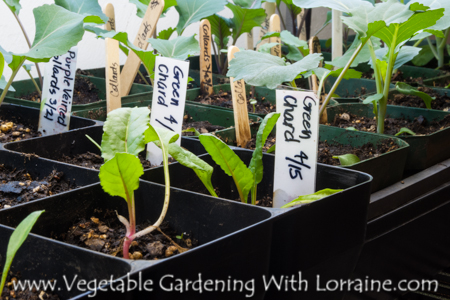| Back to Back Issues Page |
 |
|
Gifts From The Garden, Issue #001 -- Seed Starting Tips May 02, 2013 |
Well, the 2013 gardening season has arrived! Here in sunny Colorado, that means... well, it could mean anything: hot sun, driving blizzards, or howling dry winds. That's why I start my seeds indoors, until things settle down a little outside. 10 Seed-Starting Tips for Healthy Seedlings
1) Sanitize your containers If you're using reusable starter pots or trays (and I recommend you do), wash them with hot soapy water, rinse well and then spray them with a mild bleach solution before filling them with potting mix. This will reduce the chances of damping-off fungus killing your seedlings. 2) Pre-soak seeds for 12-24 hours Pre-soaking seeds allows them to imbibe water quickly and speeds germination greatly. 3) Use a heat mat Heat mats are particularly useful for slow-germinating seeds like parsley and peppers. Using one can shave a couple of weeks off your seed-starting time. 4) Go to Johnny’s Selected Seeds for a free seed-starting timing calculator This free online tool lets you enter your average last frost date, and automatically calculates when to start different seeds indoors! 5) Keep lights 2-4” away from the plants To prevent seedlings from becoming spindly, keep the lights close to the plants, but never touching. 2-4" above the tops of the seedlings is about right. 6) Put the lights on an automatic timer Seedlings need 12-14 hours of light a day, and their rhythms can get out of whack if you forget to turn the lights of at night. Put the lights on a plug-in wall timer so that the on/off times are consistent. 7) Don’t plant too deep Seed packets often suggest planting seeds to deep. Tiny seeds can be laid on the surface of the soil and barely covered with a dusting of compost. Be careful not to let them dry out. Larger seeds can go underground, but I usually plant a bit shallower than the seed packet recommends. 8) Take hardening off seriously! (Don’t get impatient) Take your seedlings outside for gradually-increasing amounts of time each day for a good ten days. Sunlight and wind are stronger and harsher than fluorescent lights and still air, and seedlings need time to adapt. If you get impatient and just plant them out, they can die. 9) Use cool-white fluorescents Plants use primarily red and blue spectrum light, so cool-white fluorescent lights work fine. Daylight spectrum works fine too, but they are more expensive and not necessary. 10) Use sturdy, reusable containers, not “plantables” I'm not a fan of compostable or "plantable" seed starting containers, because all the ones I've tried are too slow to break down after you plant them, and in the meantime they impede the free expansion of plant roots in all directions. Companies like them because they can sell them to you every year. I prefer sturdy, reusable pots like the deep root seed starting trays from Gardener's Supply, which are built to last a generation. Hope you have enjoyed this issue of Gifts From The Garden! Have a wonderful gardening season. Blessings, Lorraine |
| Back to Back Issues Page |
